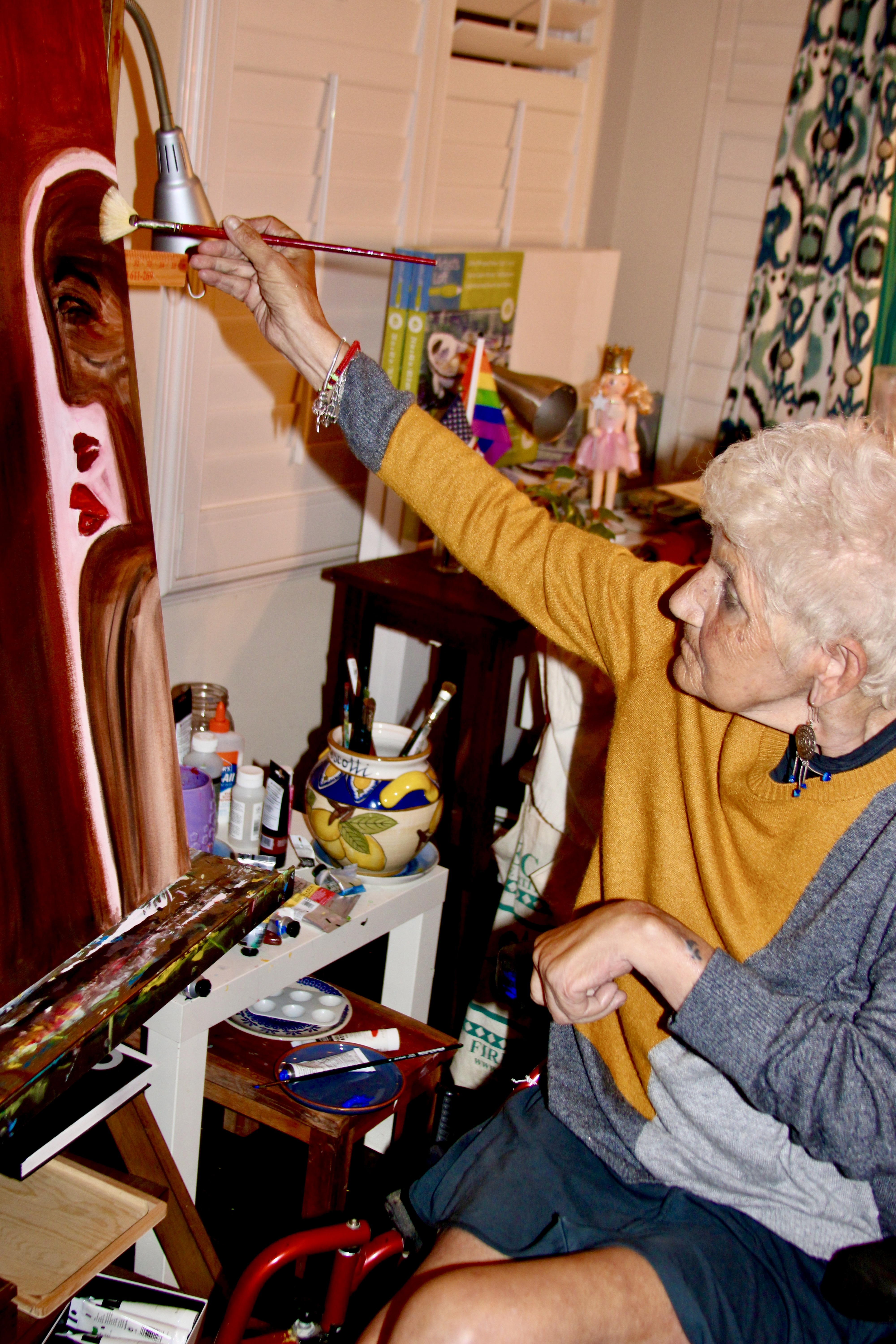Color, Courage & the Canvas: Liliana’s Artful Life in Seven Oaks

In the heart of Seven Oaks, where resilience meets creativity, lives Liliana D'Ambrioso, an Italian-born painter whose vibrant canvases tell stories of transformation, hope, and endurance. More than just a visual artist, Liliana channels her life’s trials and triumphs through bold colors and flowing lines, weaving together the old world and the new, pain and healing, tradition and reinvention.
Liliana’s journey began in southern Italy, where the intensity of life left an indelible mark on her artistic spirit. “The South is harder,” she explains. “More intensity, more fight in the day.” This fierce energy shaped her early works with bold lines, deep, passionate colors, and subjects bursting with emotion. Later, she moved to Florence, the Renaissance city she calls “a museum without a roof,” where the soft light and rich history softened her palette and broadened her vision. “In Florence, everything is beauty,” she says. “Wherever you look, something speaks to the heart.”
But Liliana’s art was shaped not only by geography, but also by the turbulent political landscape of 1960s Italy. As a young woman deeply involved in political activism, she lived through a time of social upheaval, protests, and calls for justice. “The politics of the 60's were raw and urgent,” she recalls. “It was impossible to separate life from the fight.” That fire still echoes in her work. Her early paintings were often a form of protest, visually bold, emotionally loud, and unapologetically expressive.
In 2011, Liliana’s world changed again when she suffered a stroke. “At first, I couldn’t paint. I didn’t want to,” she admits. “It felt like life had stopped. I was angry, lost.” The stroke impacted not just her body, but her sense of identity. “You lose control, not just physically, but emotionally. It’s very lonely.”
Slowly, she returned to her canvas. “It was like negotiating with myself. Will I create again? Will I let love back in?” she says. As she healed, so did her art. Her style shifted, becoming less rigid and more intuitive. “Before, I painted with my hands. Now, I paint with my heart.”
Today, Liliana works from two studios. One is in her peaceful Seven Oaks home in Bakersfield, and the other is nestled in the organic pomegranate groves of a farm in Taft, where she is surrounded by people who feel like family. “At the farm, we’re like family. The support is incredible,” she says. Surrounded by the rhythms of nature and her close-knit creative circle, Liliana finds both inspiration and belonging.
Her husband, a loyal partner of over 50 years, has been by her side through every chapter. “He’s my rock,” she says. “We’ve shared everything, joys, struggles, laughter, and tears. We cook, laugh, listen to music. Just being together, that’s what life is for,” she adds.
Even with international recognition, including exhibitions in New York, London, and Miami, Liliana remains deeply rooted in community. She is currently part of Art to Heal for Hue, a collaboration of artists who use their work to give back. Liliana has donated several pieces and proceeds from her art will go toward funding coloring books for patients in hospitals and shelters.
“I’m so excited to be a part of this project,” she says. “It’s not just about showing art. It’s about creating support, uplifting each other, and making people feel seen and loved.”
You can view Liliana’s donated artwork on display now at the Bakersfield Art Association Art Center through November. On November 8 at noon, the public is invited to the unveiling of the coloring book, a vibrant collection created by participating artists to help bring comfort, color, and healing to those in need. Visitors can meet the artists, including Liliana, and learn more about the movement. To get involved or learn more, visit art2heal4hue.com.
Even as she gives to others, Liliana continues creating new work. This fall, October 29 - November 21 she will present a new collection in Los Angeles at the TAG gallery. “People from Europe, Asia, even Korea and China connect with my work,” she says. “Social media helps, but the emotion has to be real.”
She still treasures simple things, especially the Sunday farmer’s market near Kaiser on Ming. “We go for good cheese, vegetables, just beautiful things,” she says. “The little joys help you remember what’s real.”
Though she uses a chair due to the lingering effects of her stroke, Liliana refuses to let it define her. “The chair is invisible,” she says. “My life is in the color, the red, the light. That’s what matters.”
Her post-stroke paintings are rich with emotion, fluid, soulful, and unfiltered. “When you look at my work, you’re not just seeing color. You’re seeing my journey, my rebellion, my healing, my emotions when there are no words.”
Her husband, who now assists her daily in the studio and the fields, puts it best. “She doesn’t like to explain her work. She wants people to feel it.” And they do. Her art speaks in silence, with compassion, power, and truth.
Liliana’s story is not just one of survival, but of evolution. “I’m not the same person I was before the stroke,” she says. “But maybe that’s the gift. I lost something, and I found something new.”
She offers this message to others: “A stroke changes your body, yes. But not your soul. You can still move forward. You can still love. You can still create.”
In Seven Oaks, Liliana is more than an artist or neighbor. She is a living canvas of courage, color, and grace. “I paint what I feel,” she says simply. “And I feel alive.”